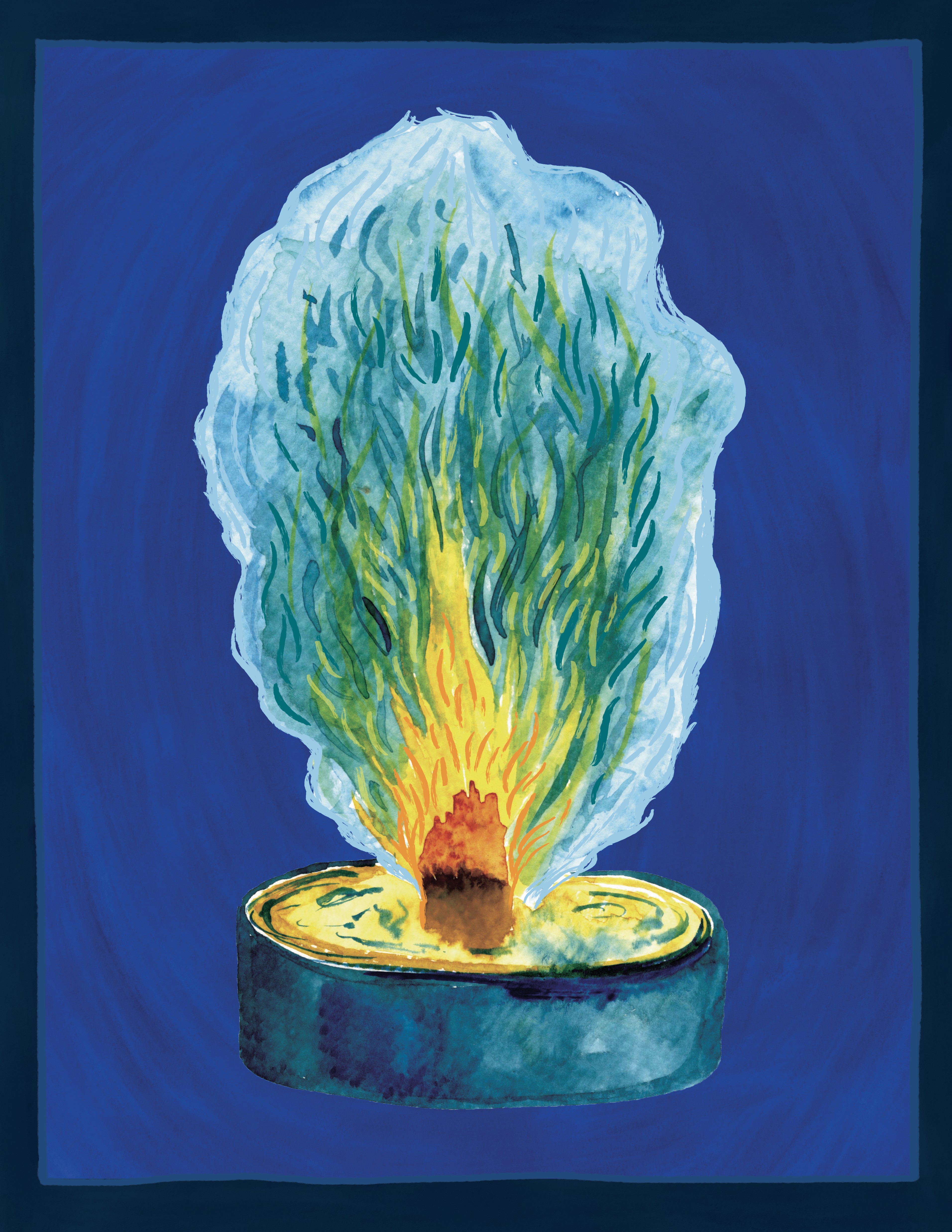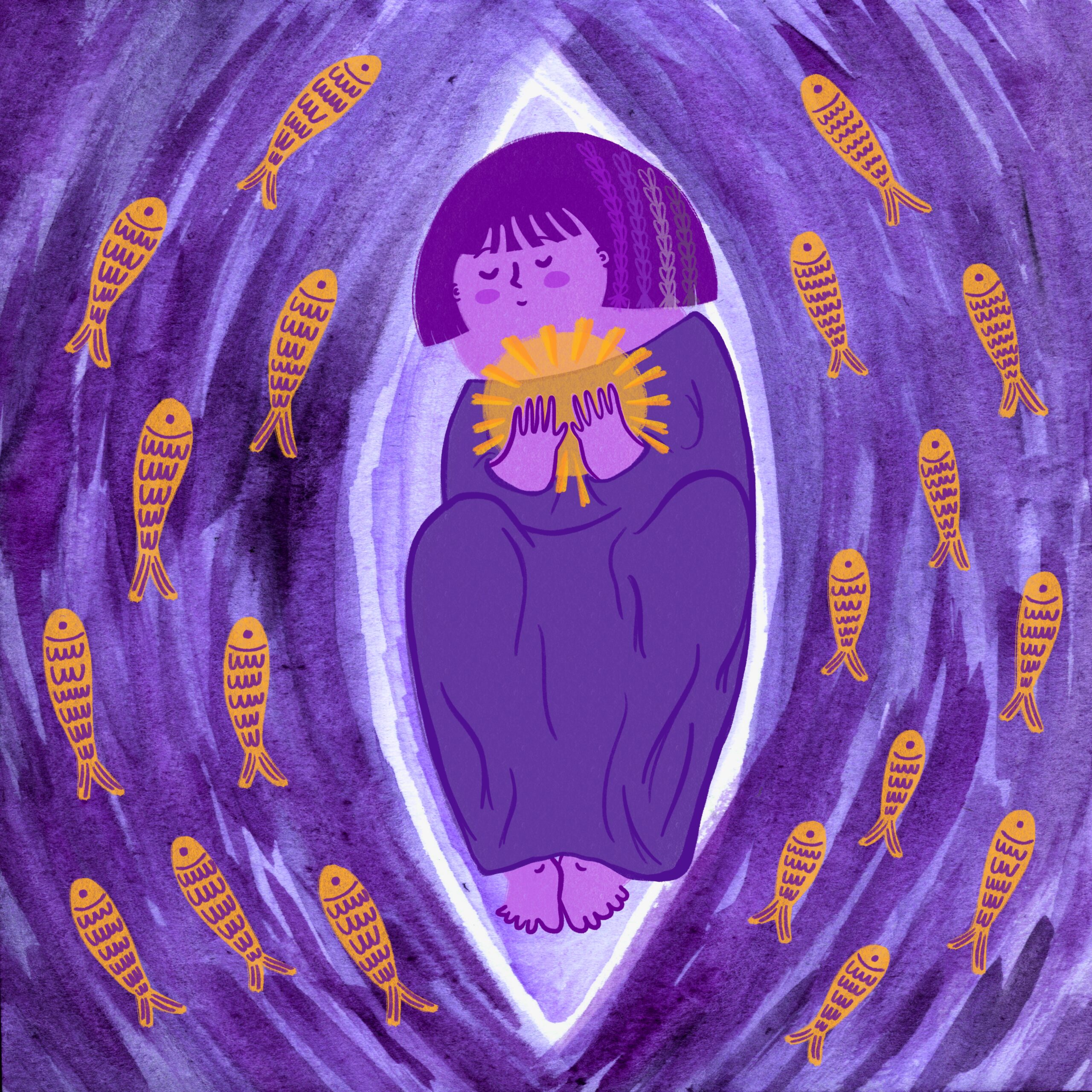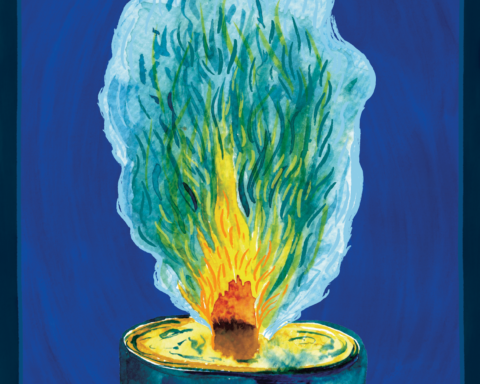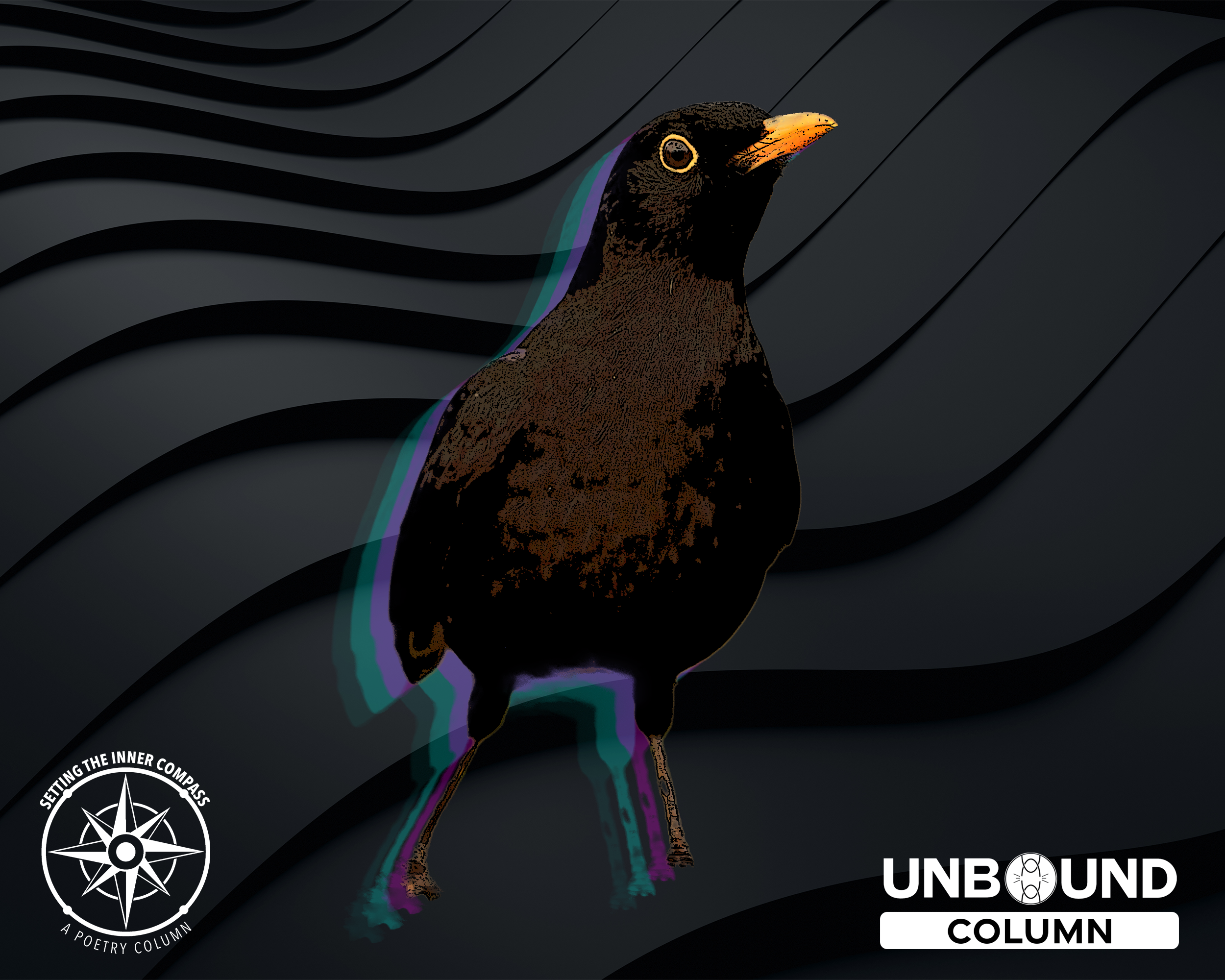
You can join them, you know, but you cannot fight them
For they just continue on their way
Doing the work that is theirs to do
They do not seek your agreement, your appropriation
When they encounter an obstacle, they find a way over it.
I have never seen people who worked so hard
Look so at peace.
From “The Work that is Theirs to Do” by Joanna Fontaine Crawford
HELD: Blessings for the Depths, edited by M Jade Kaiser and Anna K Blaedel of enfleshed
I wasn’t sure if I should say yes to doing this series of illustrations. The prophets of the Bible I grew up with are known for being xenophobic, nationalist, sometimes violent and often judgemental. Queering them would mean trying to look through and beyond verse upon verse of inflicting death and destruction to the enemies of Israel. A quick image search gave me images of vaguely Caucasian and fair-skinned Middle Eastern men from middling age to old patriarchs with long flowing beards. My only extended experience of telling stories from the Bible in contemporary ways came from my brief stint as youth librarian of a lockable white IKEA bookcase. I spent hours reading Max Lucado’s stories of Christ in modern dress, parables of mop buckets and sandwich signs…I couldn’t go back to these stories as a queer person in fear of a God and His followers that I could not trust.
I wasn’t quite sure where to start.
So I lit a candle.
A friend who has known me since I was seventeen gifted me this vanilla-scented handmade candle for my twenty-eighth birthday this year. I’ve been lighting it when I read tarot for myself – or have a need for something to focus on when I am out of sorts. I’m agnostic now, and the advice of “Look to the cross” that I grew up with no longer holds the same reassurance. I experience grief rather than hope when I see that mode of execution hung around another person’s neck. My queer, ace, panromantic, non-binary and quite heathen self hides away in their presence until (and only if) it feels safe enough to emerge.
I only let this self come out during the pandemic when I could make art safely in the anonymous digital world. I started working on a series of illustrations, prayers and biographies for a queer devotional of imagined saints. I wanted to have something to pray to. I wanted someone who could watch over me and intercede on my behalf in this confuddling, bewildering world. These saints belong to no existing religion, although echoes and structures have been adapted from faith-based sources I have found inspiring. The Book of Sainted Aunts: The Illustrated Portraits of Mildly Martyred Sinners-Turned-Saints Since Queerdom Come was published by the Southeast Asian Queer Cultural Festival – and this work is how Unbound found me.
The candle is the first image I started working on because I couldn’t feel a way through. I just sat down and painted the candle and its flickering flames. There was the crackling of the wooden wick and the strong aroma of vanilla in my room. I remember the Catholic cathedrals I have visited and lit votive candles in – an anonymous visitor who could enter the cool and quiet sanctuary without being preached to. I remember the candles on the altar as the pastor lit them for the weeks of Advent. I remember the mass audiences carrying candles in the dark, one flame spreading onwards to all of us. The hymn “Pass It On” still makes me smile.
That’s how it is with God’s love
Once you’ve experienced it
You spread His love to ev’ryone
You want to pass it on
I laugh a little because I’ve never felt the urge to evangelize in the way this hymn suggests. My friends were and are already in their own belief systems – but we’re all still yearning and longing. I’ve found more joy and love with my queer and ally tribes than with the church I grew up with, and that is okay. I’m taking the parts that make sense and feeling whole from the sum of these parts.
And so that’s what I’ve done with these prophets. I’ve taken a core detail or fact from each of their stories – sometimes from the apocrypha, Jewish or Orthodox sources or scholarly speculation – and made my own interpretation of that prophet in these illustrations. If queerness is about exploding binaries, then there can’t be an ‘us’ and ‘them’ in the rhetoric of the prophets. And if the queer experience is about knowing who you are and being compelled to express one’s beautiful complexity…the prophets are lessons in just how wearisome and dangerous it can be to exist in the world. They are also teachers of what it means to sustain hope, to see miracles happen, to believe impossible things every moment of every day because you have weathered so many doubts.
These illustrations hopefully pass on my experience of imagining what prophets I might have been sceptical of but might eventually come to believe. Perhaps you’ll find your own prophets too.
All verses quoted are from the English Standard Version of the Bible.

Anna Onni (they/she) toggles between a running list of creative projects while working as a drama educator, is obsessed with googly eyes, and lives a closeted life in Singapore with a bedroom littered with queer art, poetry and research scraps. They are currently expanding on the project “What Lets You Rest Here?” that was first started with The Birthday Collective’s Fellowship (2021-2022). Anna is the author of The Book of Sainted Aunts: The Illustrated Portraits of Mildly Martyred Sinners-Turned-Saints Since Queerdom Come that was published for the 2021 Southeast Asian Queer Cultural Festival.




Unbound Social